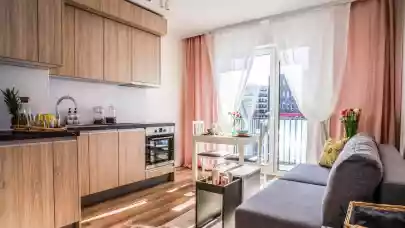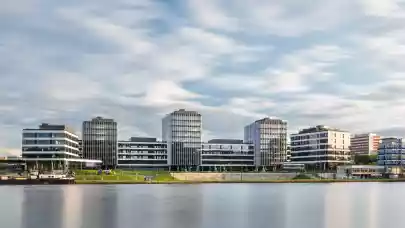
Like years ago, the Polish Private Rental Sector is going through a blooming time as each commercial real estate sector segment. It requires a unification of offers, greater standardization of available space, and self-professionalization. One of the first spectacular transactions involving the PRS was in 2016 and the purchase of 72 apartments in the Złota 44 building in Warsaw by the German investment fund Catella Residential Investment Management. At the end of September 2022, this segment is formed by an offer of more than 8,500 apartments for rent spread across Poland's largest cities. The prospects for the development of the market remain very high, and it is mainly favored by market conditions and the structure of the residential sector in Poland. AXI IMMO, together with industry experts Inquiry and ThinkCo, presents data for the Polish institutional rental market in a publication, "Development prospects for the PRS market in Poland."
The PRS (Private Rental Sector) market, or so-called institutional rental, is relatively new to the Polish real estate market. The segment has been formulating for about six years, and the most active purchases, acquisitions, or new listings were the last two, i.e., 2020 and 2021. During this time, a real boom in investment in the sector was registered, with, among others, Aurec Capital creating the LivUp brand, acquiring three properties in Warsaw (over 400 apartments), and Zeitgeist Asset Management purchasing four buildings under construction in Gdańsk with over 200 apartments. In turn, Swedish fund Heimstaden Bostad acquired 640 apartments in Warsaw (Praga Północ and Służewiec) from Eiffage in 2020 and bought more than 3,000 units a year later from Marvipol and Budimex. Also, in 2021, Nordic fund NREP acquired more than 1,000 apartments in Warsaw from YIT.
As of September 2022, the PRS sector accounted for about 1% of the rental market in Poland, with just over 8,500 institutional rental units. The largest centers were Warsaw (more than 4,000), Wrocław (about 1,200), and Poznań (about 1,000), with more than 10,000 units under construction. The largest number was in Warsaw (over 3,500), followed by Kraków and Łódź (around 1,500 each). What's more, a total of more than 30,000 institutional rental apartments are expected to be built in Poland by 2028.
A typical PRS development comprises around 300 residential units, usually part of a larger residential project for sale with an average total area of 15,000 sqm. There are one- (22-35 sqm), two- (35-50 sqm), three- (more than 50 sqm), or four-bedroom apartments, where the tenant, among other things, pays extra for utilities in the form of down payments or an optional storage unit and/or parking space.
Eurostat says 14.4% of Poles' rent it's less than half the EU-wide average of 30%. This is one of the lowest levels in the member states, which in 2020 meant that only Lithuania, Hungary, Croatia, Slovakia, and Romania had a lower share of renting. However, this structure may change in the coming years. The reason is primarily found in the rising cost of mortgages resulting, among other things, from rising interest rates and an increased level of stringency in consumer creditworthiness testing. An additional condition remains the war in Ukraine and estimates of up to one million refugees remaining permanently in Poland. Nor should we forget the students who, after the temporary exclusion associated with the Covid-19 pandemic, remained at home, and today are again a large group interested in renting an apartment. The factors outlined represent a major challenge for the domestic housing segment. The solution to this situation may be the entry of foreign investors interested in placing capital in the PRS sector.
“The vast majority of people interested in institutional rentals are those who, among other things, have difficulty obtaining financing to buy their own homes. In addition, cultural psychologists signal that as a result of generational changes, the development of transportation, or the available socio-spatial offerings resulting from globalization, the labor market is witnessing the disappearance of employees' attachment to their place of residence as to their work itself. The idea of sharing or introducing remote work due to the pandemic further intensifies this trend related to promoting the spirit of well-being and general human well-being. These changes are identical to the transformation in the real estate market, which supports the construction of mixed-use developments combining, for example, residential offerings with offices and retail functions, and soon, complemented by private dormitories or co-working spaces,” comments Grzegorz Chmielak, Head of Valuation and Capital Markets, AXI IMMO.



